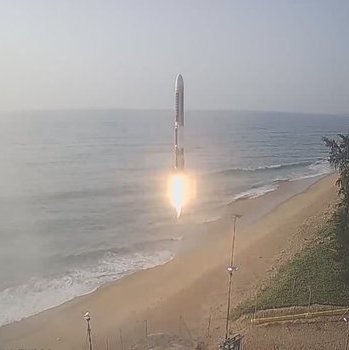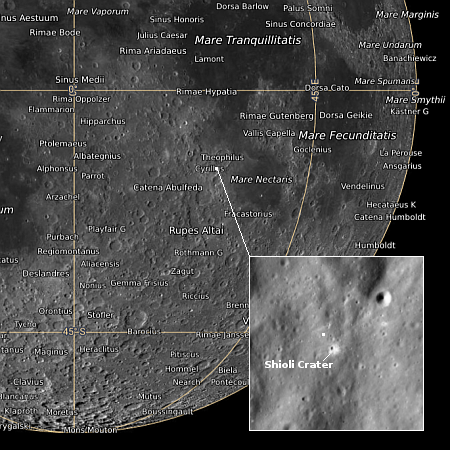Chang’e-6’s lander successfully soft lands on far side of the Moon

Chang’e-6’s landing zone is indicated by the
red box, on the edge of Apollo Creater
(indicated by the wavy circle).
China today announced that today at 6:23 pm (Eastern) the lander of its Chang’e-6’s lunar orbiter successfully soft landed on far side of the Moon.
Teams will now begin initial checks of the lander’s systems and soon begin collecting samples. The lander will collect up to 2,000 grams of samples, using a scoop to grab surface regolith and a drill for subsurface material. Samples are expected to be sent into lunar orbit within around 48 hours. Chinese space authorities have yet to publish a timeline for the mission and its steps, however.
Once docked to the orbiter, the samples will get transferred to the return spacecraft, which will return to Earth and land in China, in the same manner as was done with its Chang’e-5 sample return mission in 2021. Unlike those earlier samples, which came from the Moon’s near side (where the Apollo and Soviet samples had come from), these new samples will be first obtained from the far side.

Chang’e-6’s landing zone is indicated by the
red box, on the edge of Apollo Creater
(indicated by the wavy circle).
China today announced that today at 6:23 pm (Eastern) the lander of its Chang’e-6’s lunar orbiter successfully soft landed on far side of the Moon.
Teams will now begin initial checks of the lander’s systems and soon begin collecting samples. The lander will collect up to 2,000 grams of samples, using a scoop to grab surface regolith and a drill for subsurface material. Samples are expected to be sent into lunar orbit within around 48 hours. Chinese space authorities have yet to publish a timeline for the mission and its steps, however.
Once docked to the orbiter, the samples will get transferred to the return spacecraft, which will return to Earth and land in China, in the same manner as was done with its Chang’e-5 sample return mission in 2021. Unlike those earlier samples, which came from the Moon’s near side (where the Apollo and Soviet samples had come from), these new samples will be first obtained from the far side.





